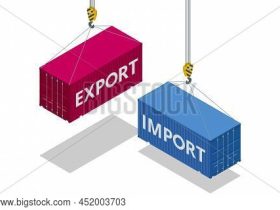
Ethiopia’s main exported goods
Ethiopia’s export economy is characterized by its reliance on agricultural goods and minerals, which generate substantial foreign revenue and employ a large portion of the population. Ethiopia is primarily known for its high-quality coffee beans, spices, oilseeds, gold, and floriculture products, which collectively form the backbone of the country’s export market. Below is a detailed look at Ethiopia’s main exports:
1. Coffee
Ethiopia is often called the birthplace of coffee, and coffee remains the country’s largest export commodity. Coffee represents roughly a third of the nation’s total export earnings. Ethiopian coffee is particularly valued for its unique flavors and high quality. The country’s coffee-growing regions, such as Sidamo, Yirgacheffe, and Harar, produce beans with distinct profiles, often preferred in specialty coffee markets around the world. The coffee industry also plays a crucial role in the livelihoods of small-scale farmers and contributes significantly to Ethiopia’s economy.
2. Oilseeds
Another critical export for Ethiopia is oilseeds, including sesame, niger seeds, and linseeds. These seeds are primarily exported to Asian and European markets, where they are in demand for various food products and oils. Sesame seeds, in particular, are a key crop, with Ethiopia ranking among the top ten global producers. The high oil content and unique quality of Ethiopian sesame make it attractive for international buyers, especially from countries like China and Israel.
3. Gold
Gold mining is one of the oldest economic activities in Ethiopia, and it has become a crucial export product. Gold accounts for a significant portion of foreign exchange revenue, supporting Ethiopia’s economy amid fluctuating commodity prices. The metal is extracted mainly from traditional small-scale mining operations, though there are also efforts to attract larger-scale investments. Ethiopia’s government has promoted the mining sector to reduce dependence on agricultural exports, and gold has increasingly contributed to export earnings in recent years.
4. Flowers and Floriculture Products
Ethiopia’s climate and altitude make it ideal for floriculture, and the industry has grown rapidly in recent years. Roses and other flowers are cultivated and exported, primarily to European countries, making Ethiopia a significant player in the global flower market. The floriculture sector not only brings in revenue but also provides employment opportunities, particularly for women, and has become one of the fastest-growing segments of Ethiopia’s export economy. The government supports this sector with incentives, recognizing its importance in diversifying exports.
5. Pulses
Pulses, such as lentils, chickpeas, and kidney beans, are another important export for Ethiopia. These legumes are not only staples in the Ethiopian diet but are also widely consumed in international markets. Ethiopian pulses are exported mainly to countries in South Asia, the Middle East, and Europe. The demand for pulses is strong due to their high protein content and versatility in vegetarian diets. Ethiopian pulses are known for their quality, and the country is actively trying to expand its pulse export market.
6. Livestock and Leather Products
Ethiopia has one of the largest livestock populations in Africa, making livestock and leather goods a natural export choice. The country exports livestock, meat, and hides, with leather products being especially valuable. Ethiopian leather is known for its quality, and the country produces various leather goods, such as bags, belts, and shoes, which are sold in African and global markets. The leather and livestock sector is an essential source of income, particularly for pastoralist communities, and is seen as a potential area for further export growth.
7. Khat
Khat, a stimulant plant with psychoactive properties, is another notable export for Ethiopia. Khat leaves are chewed in some cultures for their stimulant effect, and Ethiopia exports them mainly to neighboring countries, including Somalia, Djibouti, and Yemen. Khat is controversial because of its addictive properties, and it faces legal restrictions in many countries. However, it remains an economically significant crop in Ethiopia, providing income for farmers and contributing to export revenues.
8. Spices and Herbs
Ethiopia also exports a variety of spices and herbs, such as turmeric, ginger, and basil. Ethiopian spices are known for their unique flavors, contributing to the growing demand in international markets, especially for ethnic cuisine. These spices and herbs are exported to Middle Eastern and Asian countries, where they are used in cooking and traditional medicine. The spice sector provides income for small-scale farmers, often in rural areas, and is a potential area for export growth.
9. Textiles and Apparel
Ethiopia has been working to develop its textile and apparel industry as part of an industrialization drive. The country’s textile products, including garments and traditional woven fabrics, are increasingly exported to markets in Europe and North America. The government has invested in industrial parks and provided incentives to attract foreign investment in this sector. While still in its early stages compared to agricultural exports, the textile industry is seen as a future pillar of Ethiopian exports, with the potential to create significant employment opportunities.
Conclusion
Ethiopia’s exports are currently dominated by agricultural products, with coffee being the single largest export. Other important export items include oilseeds, gold, flowers, pulses, livestock, khat, spices, and an emerging textile sector. The government is actively promoting the diversification of the economy by encouraging investment in these sectors, as well as in manufacturing, to increase foreign exchange earnings and reduce dependency on traditional agricultural exports. These export goods are essential to Ethiopia’s economic development, helping it build resilience and providing opportunities for long-term growth.



Leave a Reply